
Telehealth Newsletter
Official Newsletter of Tamil Nadu Chapter of Telemedicine Society of India
What is New?
July, traditionally a monsoon month in India, has experienced intense rains and floods which seem to be becoming a standard event due to climate change.
A significant highlight this month was the launch of the Goa chapter of TSI, An initiative of our former president Dr. B.S. Ratta on the 8th July. Interestingly, the chosen location for this inauguration will also host the upcoming TELEMEDICON 2023 event.
In this issue, the president of Goa chapter explains their vision for the chapter. Part two of Dr. Viamal Wakahlu’s article provides insightful perspectives on Smart Technology. Additionally, I’ve included several intriguing pieces of international press coverage that have been received recently.
Thank You
Dr. Sunil Shroff
Chief Editor
President – TN Chapter – TSI

TELEMEDICINE SOCIETY OF INDIA – GOA STATE CHAPTER
Dr. Devdutt M. Sail
B.A.M.S PG-CRCDM-Clinical Research
Secretary – Goa State – Telemedicine Society of India
The Telemedicine society of India- Goa state chapter was inaugurated on 8th July 2023 by the dignitaries from the National Executive Committee- TSI India marking a new era of E-health and putting Goa on the map of national telemedicine framework.
Our Vision
Telemedicine society of India- Goa State chapter is formed with an aim to inculcate telemedicine as an integral part of health care delivery in present and future.
As our county is evolving is all aspects, healthcare and medical sector is witnessing tremendous growth, India’s national public health policies are accentuating technology and digitalization for efficient, economical, and quality delivery of healthcare, it is pertinent that telemedicine will play an important role to augment traditional medical care, the prime example of this metamorphosis was experienced during COVID-19 pandemic.
Goa as a tourist destination and small state having excellent healthcare network in public and private sector. However it has its own set of challenges to improvise the delivery of healthcare, disparity of human resources in healthcare along floating population of the state and issues of mobility can create gaps in efficient delivery of timely healthcare. If there is a good network of point-of-care telemedicine and E-health hubs, it will help in bridging such gaps and create efficiency.
Overall Objective
Promote and implement all aspects of telemedicine and E-Health among the medical community and general public and to participate and do value addition in state, national and international events in the field of telemedicine.
Our Immediate Goals-
– To strengthen the TSI Goa state chapter by incorporating members of medical fraternity and other professionals.
– To sensitize the general public and medical sector on guidelines governing telemedicine.
– To demonstrate real-world working of telemedicine and E-health tools to benefit the patient and doctors.
– To convince the medical community on importance of telemedicine to augment clinical practice.
Long term Goals-
– To ensure setting up network of telemedicine point-of-care in individual and institutional capacity delivering healthcare to common citizens of the state.
– To contribute towards strengthening the national legislations governing telemedicine and E-health.
– To constitute “Telemedicine Cells” in government and non-government organizations for bringing telemedicine in mainstream.
– To create a digital healthcare map of state of Goa along with online digital platform on boarding local doctors and patients.
– To create and inventory of certified telemedicine tools and platform with qualified and trained manpower to deliver E-health
FOUNDING MEMBERS
A consortium of 25 doctors and professionals from state of Goa have joined hands as the founding members of the chapter, the members are a cohort of diverse background including Oncologist’s, Gynecologists, General Physicians, Surgeon’s, Physio therapist, Dieticians, AYUSH doctors and Engineers.
The current working Committee-
Dr. Suyog Samuel Arawattigi, President
Dr. Shekhar Shivram Salkar, President Elect
Dr. Kedarnath M. Padte, Vice President
Dr. Devdutt M. Sail, Secretary
Dr. Paresh G. Kamat, Joint Secretary
Dr. Babita Angle Prabhudesai, Treasurer
List of other members-
Dr. Shuba Jyothy Bobbili, Executive Committee
Mr. Chinmay Kantak, Executive Committee
Dr. Swati Divyal Pai, Executive Committee
Dr. Anushri Mukhopadhyay, Executive Committee
Lt. Col. Dr. Parag Prabhudesai, Executive Committee
Mr. Sagar Utagi, Executive Committee
Dr. Richard L. Fernandes, Scientific Committee
Dr. Vibhav Verlekar, Scientific Committee
Dr. K. Ramananda Kamath, Scientific Committee
Dr. Akshata Kotharkar, Program Committee
Mr. Michael Fernandes, Fund Raising Committee
Dr. Swarna Pathak, Newsletter Committee
Dr. Mohammed Mazhar Shaikh, Membership Committee
Dr. Keith Allen Fernandes, Membership Committee
Launch of Goa Chapter
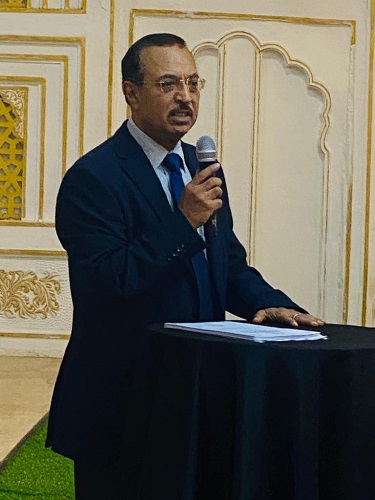

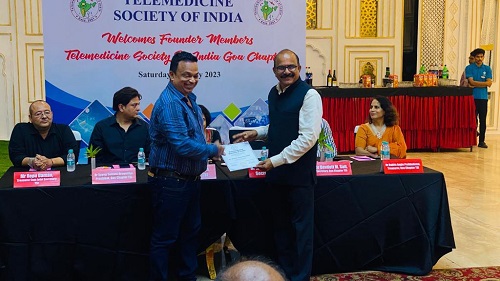
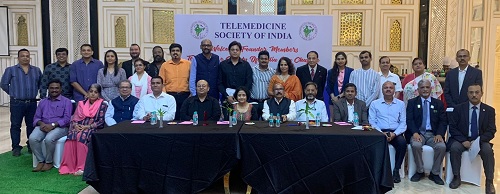
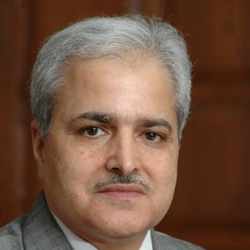
Leveraging Emerging Technologies for Healthcare – Smart Health Part2
Vimal Wakhlu
Past President, Telemedicine Society Of India
In Part 1 of this writeup we had talked about how the Sustainable Development Goal 3 aims to address the various health challenges and how the Emerging Technologies can be leveraged for achieving those objectives. Those objectives of SDG3 are:
#1 Reducing maternal mortality and ensuring access to quality maternal and reproductive healthcare services.
#2 Ending preventable deaths of newborns and children under 5 years old, with a focus on tackling major diseases, malnutrition, and providing vaccinations.
#3 Combating major communicable diseases such as HIV/AIDS, malaria, and tuberculosis, as well as non-communicable diseases like cancer and cardiovascular diseases.
#4 Ensuring universal access to healthcare services, including access to essential medicines and vaccines, and strengthening health systems.
#5 Addressing substance abuse, promoting mental health, and providing access to affordable and quality healthcare services for all.
We had discussed about the role of Artificial Intelligence and Data Analytics, Telemedicine and Telehealth, and Electronic Health Records. In this part we shall discuss about other technologies.
Internet of Medical Things IoMT: Wearable devices, such as smartwatches or patches, can monitor vital signs, fetal heart rate, and uterine contractions. These devices enable healthcare providers to remotely track the health status of pregnant women, identify potential complications early on, and provide timely interventions. (#1)
Telemedicine platforms and remote monitoring devices can facilitate remote consultations and monitoring of children’s health. Parents or caregivers can share vital signs, and report any concerning symptoms to the healthcare providers. This can help in the management of chronic conditions, timely response to emergencies, and continuous monitoring of children’s growth and development. (#2).
Wearable devices, such as smartwatches and fitness trackers, can collect realtime health data, monitor vital signs, and track disease progression. These devices enable remote monitoring of patients with chronic conditions, allowing healthcare providers to intervene early in case of complications and optimize treatment plans. They can also promote preventive behaviors and encourage individuals to adopt healthier lifestyles.(#3)
Wearable devices with biosensors, can monitor physiological and behavioral indicators associated with mental health and substance abuse. These devices can detect changes in heart rate, sleep patterns, physical activity, and stress levels. Digital biomarkers derived from these data can aid in early detection, personalized interventions, and tracking treatment progress. These can also be used for pain control, Smart belt for protection of elderly people against falls, Ingestible sensors for prevention of drug abuse (#5)
Extended Reality: Extended Reality (ER) which includes Virtual reality (VR) and Augmented reality (AR), can be used to create immersive and interactive educational experiences for both healthcare providers and pregnant women. These technologies can simulate medical procedures, childbirth scenarios, and complications, allowing for better training and increased awareness about maternal health. (#1)
ER can enhance health workforce training and capacity building. These can provide realistic training scenarios, allowing healthcare professionals to practice procedures, clinical decision-making, and emergency responses. This technology reduces the need for physical resources and can reach a broader audience, improving the skills of healthcare providers globally.(#4)
Post trauma stress management, Parkinson’s management, patient phobia management, rehabilitation process, special surgeries, robotic surgeries, precision biopsies, healthcare training, smart medical education can be effectively undertaken using Extended Reality.
Drones: Drones can be used to transport essential medical supplies, such as blood products, medications, vaccines and emergency equipment like defibrillators in remote and inaccessible areas, thus overcoming geographical barriers, and ensure timely access to life-saving interventions for pregnant women, children or other patients in need of the same. Drones can also help transport critical patients from remote and inaccessible areas.
Quantum Computing: Quantum computing aids speeding up of machine learning process, help create antidotes for disease like Alzheimer’s and cancer, besides drug development, silico clinical trials, speeding up DNA sequencing and analysis.
Blockchain: Patient Data storage and protection, clinical trials, analysis of medical procedures, supply chain management and drug traceability can be ensured using Blockchain. Besides, it would help in improving transparency, traceability, and accountability in the distribution process, reducing inefficiencies, stockouts, and identification of counterfeit products.
3D Printing: Prosthetics, dentistry, porous bone structures, bioprinting of bio parts including cartilages can be enabled leveraging 3D printing. This could be a big boon in the developing countries with a lot of citizens with physical challenges.
Digital Twins: Digital twins help evaluate surgery risk assessment, patient monitoring, development in drug therapy model.
(To be continued)
[This article has been first published in Communications Today in June 2023 as
Healthcare 2.0: Unlocking Opportunities with Emerging Technologies]
AI Can provide Life-Saving Early Diagnosis and Advance the Treatment of Pulmonary Hypertension
(Submitted as Press Release)
Global AI firm Thirona has unveiled LungQ™ AVX, an AI algorithm designed for pulmonary artery-vein phenotyping. Revealed at the ATS 2023 International Conference, the algorithm showed promise in detecting pulmonary vasculature abnormalities from CT scans.
It precisely identifies and quantifies vessel diameters and volumes, essential for accurate and sensitive analysis. Early studies suggest that LungQ™ AVX enables non-invasive detection of arterial and venous changes, potentially facilitating early diagnosis of diseases such as pulmonary hypertension.
The algorithm also aids in diagnosing different vascular diseases and assessing treatment outcomes without requiring contrast-enhanced CT. Leticia Gallardo Estrella, a senior team leader at Thirona, highlights the tool’s potential in early detection and disease management, particularly for rare diseases like pulmonary hypertension (PH).
The insights provided by LungQ™ AVX cannot be subjectively assessed from a CT scan as the eye is not sensitive enough to pick up subtle changes in the dimensions of the pulmonary arteries and veins. AVX could potentially help PH diagnosis by detecting relevant vascular alterations way earlier than they can be picked up by current golden standard of hemodynamic measurements by right-heart catheterization.
Leticia Gallardo Estrella, PhD., Senior Deep Learning Engineering Team Leader at Thirona: “Our expectation is that AV phenotyping will have the most noteworthy benefits in detecting pulmonary hypertension and its subtypes. PH is a rare disease with a very high underdiagnosis rate. Applying AI to help with its early detection can potentially result in slowing the disease progression in PH patients by ensuring they get the best possible treatment sooner.”
“It is an exciting step forward in phenotyping pulmonary vascular disease. AVX is a result of almost a decade of research and development work aimed at finding vascular phenotypes to improve the diagnosis of a multitude of vascular diseases and to identify new potential therapeutic targets. Today, we have several validation studies delivering strong evidence that AVX can potentially transform the way we diagnose and treat uncurable diseases like pulmonary (arterial) hypertension. And more studies are pending.”, says Jean-Paul Charbonnier, PhD., Chief Innovation Officer at Thirona.
References
Boomars, K. A. (2023). Can AI-based Pulmonary Vascular Phenotyping on Chest-CT Detect Volume Shifts in Pulmonary Arterial and Venous Blood Volume in Operable and Non-operable Chronic Thromboembolic Pulmonary Hypertension? In D28. HOW CAN WE DO BETTER: EMERGING DIAGNOSTICS AND THERAPEUTICS IN PULMONARY VASCULAR DISEASE (pp. A6468-A6468). American Thoracic Society.
Maloir, Q., Gallardo Estrella, L., Ernst, B., Louis, R., Charbonnier, J. P., & Guiot, J. (2023). Artificial Intelligence-Based Analysis Differentiates PAH From PH Using Non-Contrast Chest CT Scans. In B56.-OMICS, MACHINES, AND DEVICES IN PULMONARY HYPERTENSION (pp. A3724-A3724). American Thoracic Society.
Maloir, Q., Gallardo Estrella, L., Ernst, B., Louis, R., Charbonnier, J. P., & Guiot, J. (2023). A Step Towards Early Detection of Pulmonary Hypertension on Non-Contrast Chest CT Scans Using Artificial Intelligence. In B56.-OMICS, MACHINES, AND DEVICES IN PULMONARY HYPERTENSION (pp. A3725-A3725). American Thoracic Society.
Australia telehealth devices market to grow at 10% CAGR through 2030
Australia is making impressive strides in telehealth advancements, capitalizing on the integration of technology in healthcare. Against this backdrop, Australia’s telehealth devices market is set to grow at a compound annual growth rate (CAGR) of around 10% between 2023 and 2030, forecasts GlobalData, a leading data, and analytics company.
GlobalData’s report, ‘Telehealth Market Size (Value, Volume, ASP) by Segments, Share, Trend and SWOT Analysis, Regulatory and Reimbursement Landscape, Procedures and Forecast to 2030’ reveals that Asia-Pacific is one of the fastest-growing regions for telehealth market, owing to factors such as a growing elderly population, technological developments, and increasing demand for healthcare and medical support in rural locations. The shortage of healthcare professionals and increased calls to reduce escalating healthcare expenditure are other factors that are expected to cause the region’s market to grow at a faster pace.
Wound care treatment in Australia is undergoing a notable transformation as digitalization in healthcare advances rapidly, providing strong support for the growth of the telehealth market. Significant developments are expected to take place in wound care in the coming years as researchers from the University of Adelaide introduce smart glasses featuring mixed reality technology. These innovative glasses are expected to revolutionize wound care, particularly for diabetes and vascular-related conditions.
Shraddha Sapkal, Medical Devices Analyst at GlobalData, comments: “The escalating demand for telehealth services can be attributed to its provision of convenient and affordable access to high-quality medical treatment, effectively meeting the needs of both consumers and providers who prioritize convenience and improved care accessibility.”
Leveraging the power of video calling and mobile images, mixed-reality smart glasses are anticipated to provide enhanced solutions in the telehealth space, facilitating remote healthcare workers in rural areas real-time supervision from specialists as they assess and treat patients’ leg and foot ulcers.
Sapkal concludes: “Australia’s inventive venture into smart glasses for wound assessment has set the tone for a transformative journey in the field of telehealth. With an ongoing dedication to innovation and improved healthcare access, the country stands out as a bright example for the global healthcare community. As the telehealth landscape evolves and thrives, the world may expect an upsurge of new advances and beneficial consequences that will overhaul not only wound care, but also the broader frontiers of healthcare.”
Press Release Submitted by Global Data
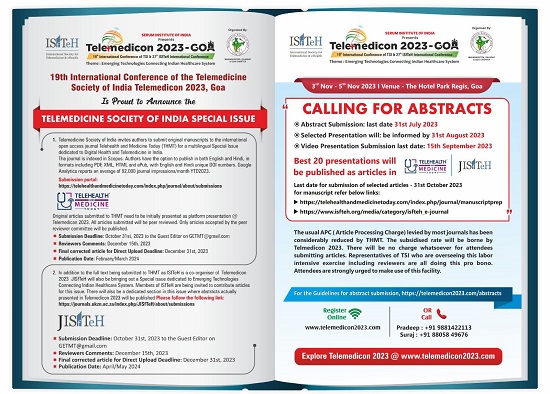
Telemedicine – News from India & Abroad
Can AI be Your New Therapist?
Feeling heard and understood, like you’re chatting with a close friend rather than a machine – that’s what some users are experiencing with ChatGPT. In recent discussions on Reddit, people have been amazed at how this AI-powered program empathetically listens to their struggles with managing thoughts, leading them to claim,….. Readmore
Artificial Intelligence: A Beacon of Hope for Cystinosis Patients
By utilizing model systems and Insilico’s PandaOmics platform, the researchers identified the disease-causing pathways and ranked therapeutic targets within cystinosis cells.Insilico Medicine is a company that uses AI for drug discovery, to uncover the underlying cellular mechanism behind kidney disease in cystinosis……Readmore
AI-Powered Robot “Companions” to Combat Human Loneliness
In the future, companion robots integrated with artificial intelligence have the potential to assist in alleviating the widespread issue of loneliness.Their report, appearing in the July 12 issue of Science Robotics, maps some of the ethical considerations for governments, policy makers, technologists, and clinicians, and urges stakeholders….Reademore
Artificial Intelligence Unveils Genes that Shape Bones
By harnessing artificial intelligence, researchers have successfully identified the genes responsible for shaping our skeletal structure.The research, published as the cover article in Science, pulls back a curtain on our evolutionary past and opens a window into a future where doctors can better predict patients’ risks of developing ….Readmore
TN – TSI invites all the TSI Chapters and Members to submit information on their upcoming Webinar or Events (50 words), News related to Telemedicine (200 words) or short articles (500 words) for the monthly e-newsletter.Guidelines for submission to TN TSI Newsletter-
- Report can be from 500 to 600 words
- Report Should be relevant to Telemedicine or Medical Informatics
- No promotion of self or any product
- Avoid plagiarism
- All references should be included
- Provide any attributions
- Visuals are welcome including video links
- Send full authors name, degrees, affiliations along with a passport sized photograph of good resolution. If multiple authors only main author photo to be sent.
Submission may be sent to – tsigrouptn@gmail.com
Editors reserve the rights for accepting and publishing any submitted material.
Editor in Chief – Dr. Sunil Shroff
Editors – Dr. Senthil Tamilarasan & Dr. Sheila John
Technical Partner- https://www.medindia.net

